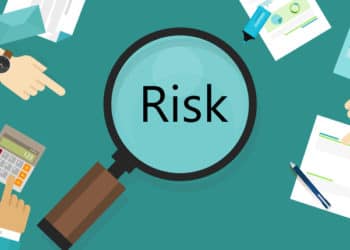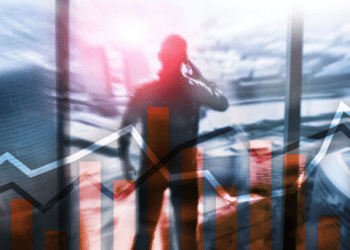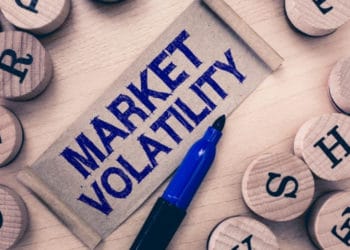What is slippage in trading?
When an order is made to a broker and the deal is executed, it’s not unusual for differences in the prices. Slippage happens when the price in the order differs from the one at which the trade is completed. In missing supplies, the blame falls on the time margin between the order and delivery time.
The price will fluctuate, either positively or otherwise, depending on whether the price moved in a direction you anticipated and if you’re opening or closing a trading position.
Slippage is a universal phenomenon that everyone in the trading industry experiences: whether dealing in currency futures, spot forex, or equities, it is difficult to avoid it altogether.
What causes slippage?
Slippage often arises when a market is illiquid or has excessive volatility. In markets with low liquidity, the lack of traders means orders take longer to execute, as other buyers or sellers are not filled immediately.
A delay in getting in or out of a market would likely impact its price, and you could have encountered slippage as a result. A volatile market can change prices quickly, even within the few seconds between placing an order and having it executed.
When there is a low amount of trading in the market, smaller volumes of trade are transacted. Prices can fluctuate relatively quickly, even in the absence of sufficient fundamental or technical reasons. This is because there may not be enough trading momentum support to keep a particular price stable. Although these price shifts are not overly large, they will surely result in slippage.
Slippage in forex trading
When the markets are volatile, liquidity is low, and slippage occurs more frequently. Even though this usually occurs on less liquid currency pairs, the problem is most evident in the EURGBP, GBPUSD, and USDJPY currency combinations, as these currencies are more stable and have greater liquidity.
Let’s look at a specific example. Suppose you initiate a long position on the AUDJPY currency pair after it was quoted at 80.8026. This pair is quite volatile, so be aware. If the price grows by 0.0384 before the order is filled, slippage may occur because you are purchasing at a higher level than intended.
The currency market might be a bit wild at times, especially if some currency pairs or assets change prices more rapidly. Perhaps it was caused by a specific big news story, or it was linked to certain dates on the economic calendar, or maybe it’s related to the state of the economy overall. Prices may swing rapidly because of the volatility, causing slippage in the market.
Positive and negative slippage
Slippage can be either an upward or downward fluctuation of the price of the security between its order and the execution of that order. When the asking price of an asset lowers before a long trade is executed, slippage is a favorable occurrence.
Let’s take the case of the USDJPY market. Let’s assume that the current ask price is 110.3956. With this in mind, you may probably expect the order to be executed 110.400. If you were able to trade and get a trade confirmation message within seconds of your trade but the market price had changed by 109.9880 between the trade and when you got the confirmation, you have benefited from a positive slippage.
This is just a fancy way of saying that you have gotten a better price on your trade than the quote price and may now do anything you choose with your profits.
The exact opposite impact, known as negative slippage, occurs when the price rises slightly, and you end up paying a little more than you anticipated when you bought the currency pair. In the given an example, if you put a buy order at 110.3956 and it is executed at 110.4375, you will have incurred a negative slippage.
Mitigating slippage in Forex
The main idea is to understand that news and price volatility increase the risk of slippage in forex trading. A few things can be done to keep slippage down and, possibly, to avoid it completely:
- Slippage is reduced by trading in low-volatility, high-liquidity marketplaces. Low volatility indicates that the price is unlikely to swing, and high liquidity means there are lots of people buying and selling, so you’re always able to find a counterparty. In addition, you can protect yourself by strictly trading during trading hours with the greatest liquidity.
- Keep up to date on high-impact items, such as changes in the Fed monetary policy, employment figures, GDP growth rate figures, and other impactful fundamental news. Such news releases create wider spreads, volatile price swings, which can significantly increase slippage for Forex traders.
- Make sure to have a good understanding of the two currencies you are trading. There are times when a currency or financial market might be influenced by long-term fundamentals, resulting in larger volatility in general. For instance, after the Brexit vote, the British Pound quickly sank to levels lower than it had in decades.
- Make sure you trade through a reputable, trustworthy brokerage firm that utilizes real market transactions and executes them with minimal slippage.
Golden tip to avoid slippage in trading
To eliminate or lower it in their trading, stock and FX traders might benefit significantly from trading with limit orders instead of market orders. Slippage will happen no matter what when the markets become unpredictable or lack liquidity. It should also be expected when there is intense market movement surrounding key financial announcements. It is best to avoid making big trades during these hours.







